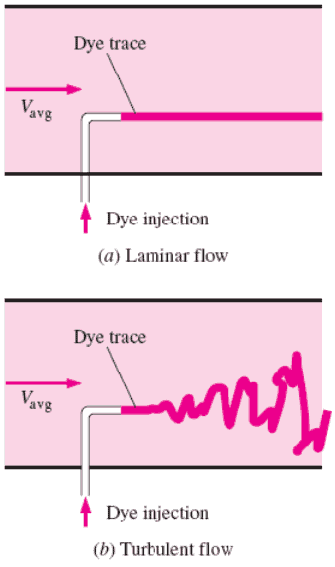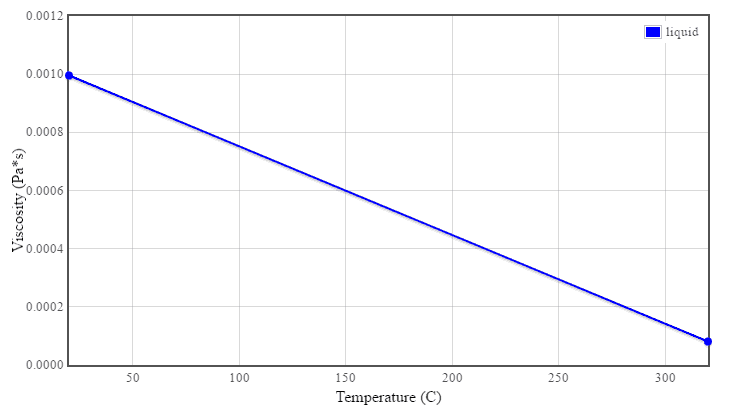Streamline Flow
The term streamline flow is descriptive of the laminar flow because, in laminar flow, layers of water flowing over one another at different speeds with virtually no mixing between layers, fluid particles move in definite and observable paths or streamlines.
In fluid dynamics, laminar flow is characterized by smooth or in regular paths of particles of the fluid, in contrast to turbulent flow, that is characterized by the irregular movement of particles of the fluid. The fluid flows in parallel layers (with minimal lateral mixing), with no disruption between the layers. Therefore the laminar flow is also referred to as streamline or viscous flow.
When a fluid is flowing through a closed channel such as a pipe or between two flat plates, either of two types of flow (laminar flow or turbulent flow) may occur depending on the velocity, viscosity of the fluid and the size of the pipe. Laminar flow tends to occur at lower velocities and high viscosity. On the other hand turbulent flow tends to occur at higher velocities and low viscosity.
Since laminar flow is common only in cases in which the flow channel is relatively small, the fluid is moving slowly, and its viscosity is relatively high, laminar flow is not common in industrial processes. Most industrial flows, especially those in nuclear engineering are turbulent. Nevertheless laminar flow occurs at any Reynolds number near solid boundaries in a thin layer just adjacent to the surface, this layer is usually referred to as the laminar sublayer and it is very important in heat transfer.
Despite the small thickness of the laminar sublayer (usually much less than 1 percent of the pipe diameter), since it strongly influences the flow in the rest of the pipe. Any irregularity or roughness on the surface disturbs this layer and significantly affects the flow. Therefore, unlike laminar flow, the friction factor in turbulent flow is a strong function of surface roughness.
Laminar vs. Turbulent Flow

Laminar Flow:
- Re < 2000
- ‘low’ velocity
- Fluid particles move in straight lines
- Layers of water flow over one another at different speeds with virtually no mixing between layers.
- The flow velocity profile for laminar flow in circular pipes is parabolic in shape, with a maximum flow in the center of the pipe and a minimum flow at the pipe walls.
- The average flow velocity is approximately one half of the maximum velocity.
- Simple mathematical analysis is possible.
- Rare in practice in water systems.
Turbulent Flow:
- Re > 4000
- ‘high’ velocity
- The flow is characterized by the irregular movement of particles of the fluid.
- Average motion is in the direction of the flow
- The flow velocity profile for turbulent flow is fairly flat across the center section of a pipe and drops rapidly extremely close to the walls.
- The average flow velocity is approximately equal to the velocity at the center of the pipe.
- Mathematical analysis is very difficult.
- Most common type of flow.

We hope, this article, Streamline Flow, helps you. If so, give us a like in the sidebar. Main purpose of this website is to help the public to learn some interesting and important information about thermal engineering.

